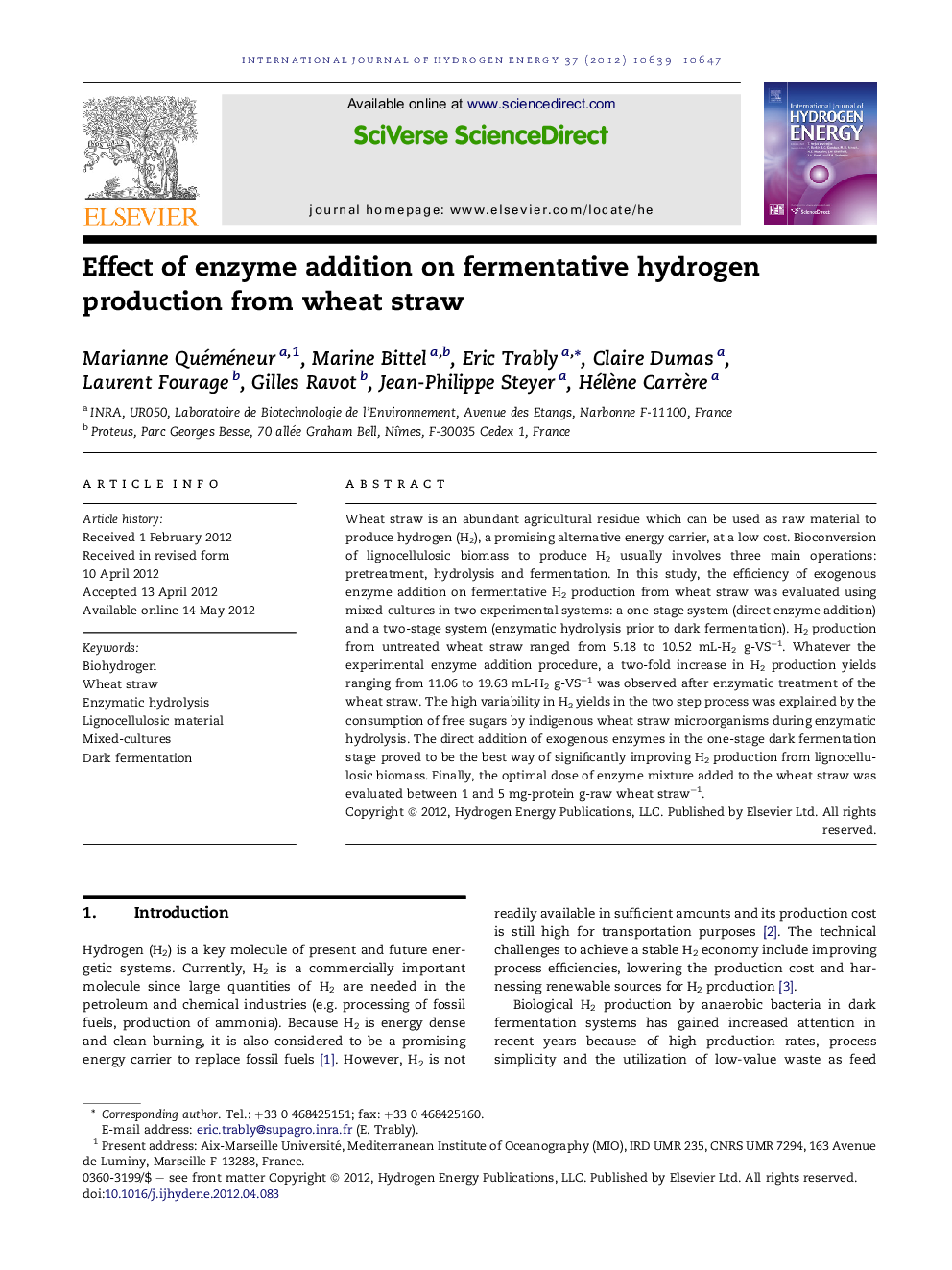| Article ID | Journal | Published Year | Pages | File Type |
|---|---|---|---|---|
| 1276344 | International Journal of Hydrogen Energy | 2012 | 9 Pages |
Wheat straw is an abundant agricultural residue which can be used as raw material to produce hydrogen (H2), a promising alternative energy carrier, at a low cost. Bioconversion of lignocellulosic biomass to produce H2 usually involves three main operations: pretreatment, hydrolysis and fermentation. In this study, the efficiency of exogenous enzyme addition on fermentative H2 production from wheat straw was evaluated using mixed-cultures in two experimental systems: a one-stage system (direct enzyme addition) and a two-stage system (enzymatic hydrolysis prior to dark fermentation). H2 production from untreated wheat straw ranged from 5.18 to 10.52 mL-H2 g-VS−1. Whatever the experimental enzyme addition procedure, a two-fold increase in H2 production yields ranging from 11.06 to 19.63 mL-H2 g-VS−1 was observed after enzymatic treatment of the wheat straw. The high variability in H2 yields in the two step process was explained by the consumption of free sugars by indigenous wheat straw microorganisms during enzymatic hydrolysis. The direct addition of exogenous enzymes in the one-stage dark fermentation stage proved to be the best way of significantly improving H2 production from lignocellulosic biomass. Finally, the optimal dose of enzyme mixture added to the wheat straw was evaluated between 1 and 5 mg-protein g-raw wheat straw−1.
► Enzyme addition led to a two-fold increase in H2 production from wheat straw. ► Direct enzyme addition into a dark fermentation reactor improved H2 production. ► H2 production after enzymatic hydrolysis was reduced by sugar consumption. ► H2 yields increased with increasing concentration of enzyme mixture.
